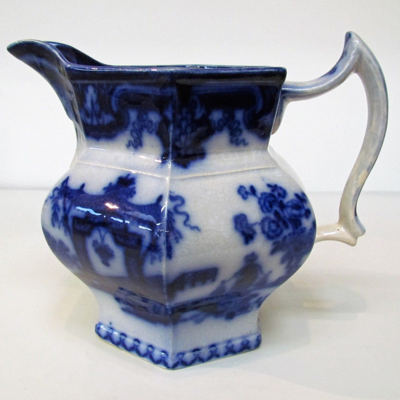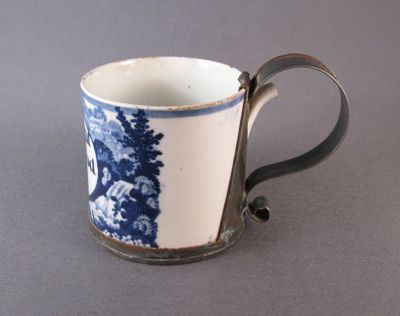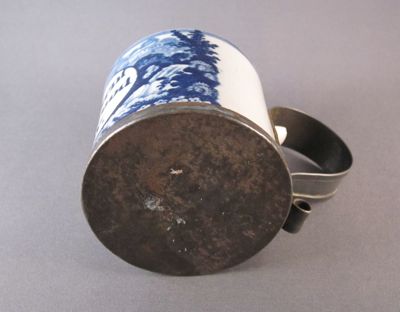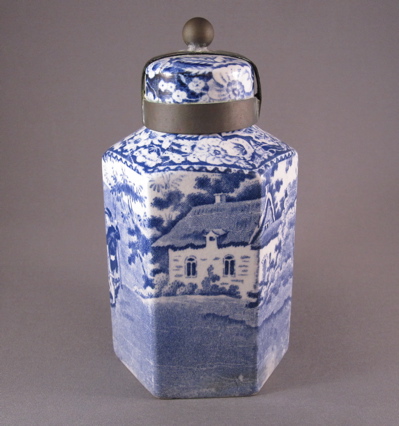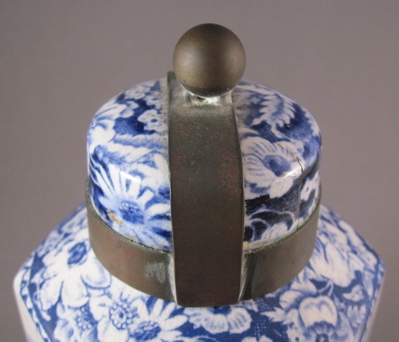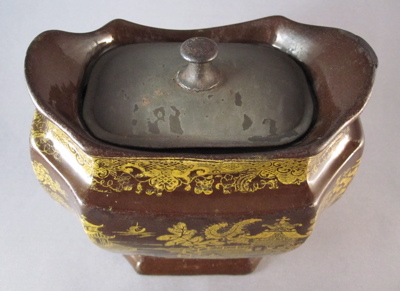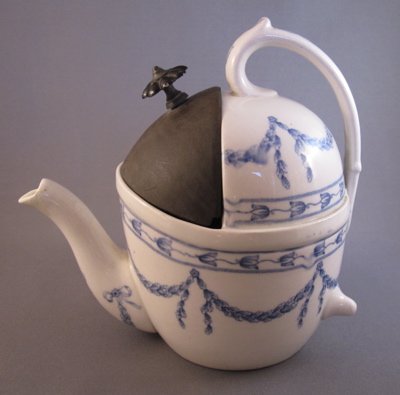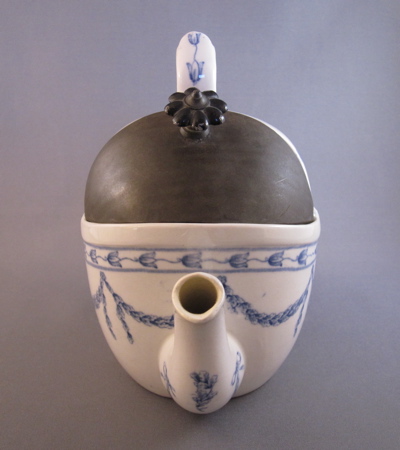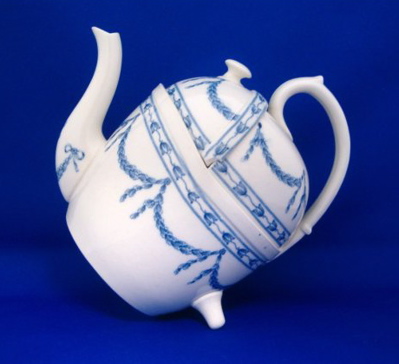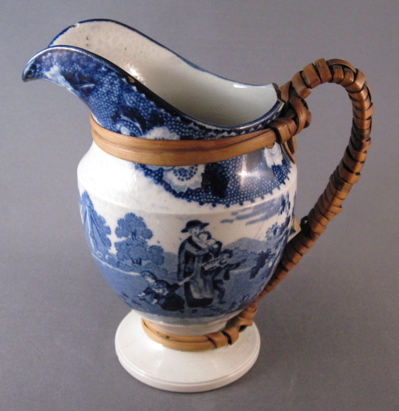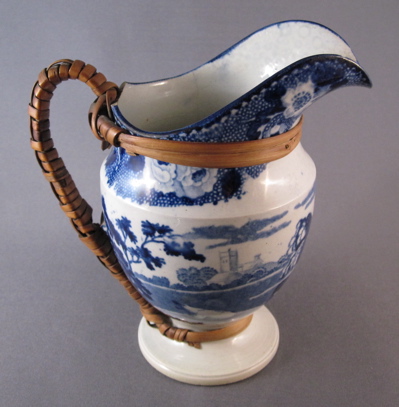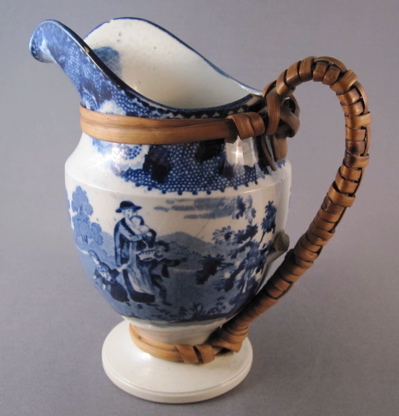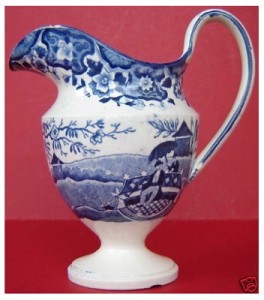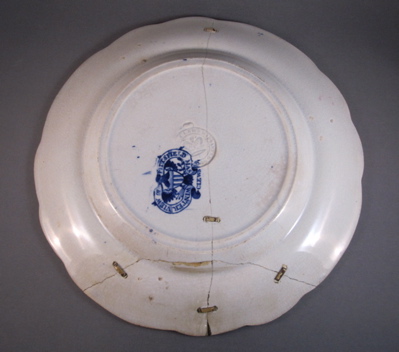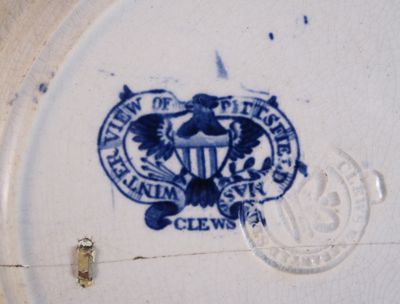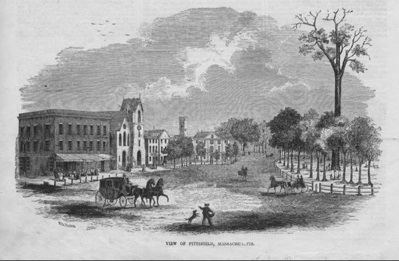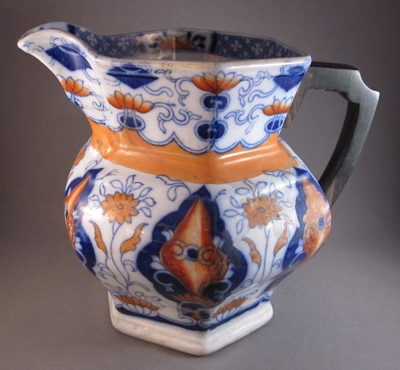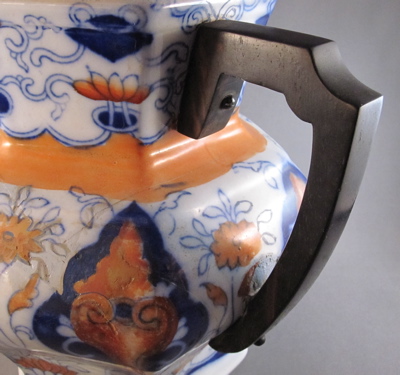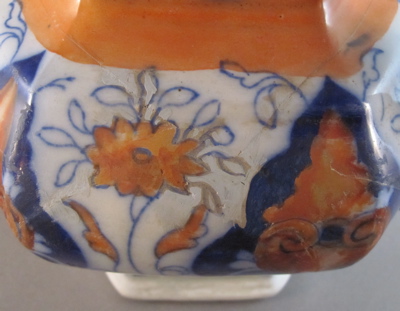“Flow blue” describes a technique of firing transferware pottery with lime or ammonia chloride added to the kiln, resulting in an intentional blurry or runny effect. Over 1,500 different patterns were produced throughout Europe, England and the United States during the Victorian era
This ironstone pottery jug stands 6-1/4″ high and has a popular Oriental pattern in deep cobalt blue
Although unmarked, I believe this piece to have been made in England
A silvered metal handle with wide bands were secured to the jug, replacing the original broken handle
This similarly shaped flow blue jug shows what the original handle might have looked like on my jug.
Photo courtesy of eBay




